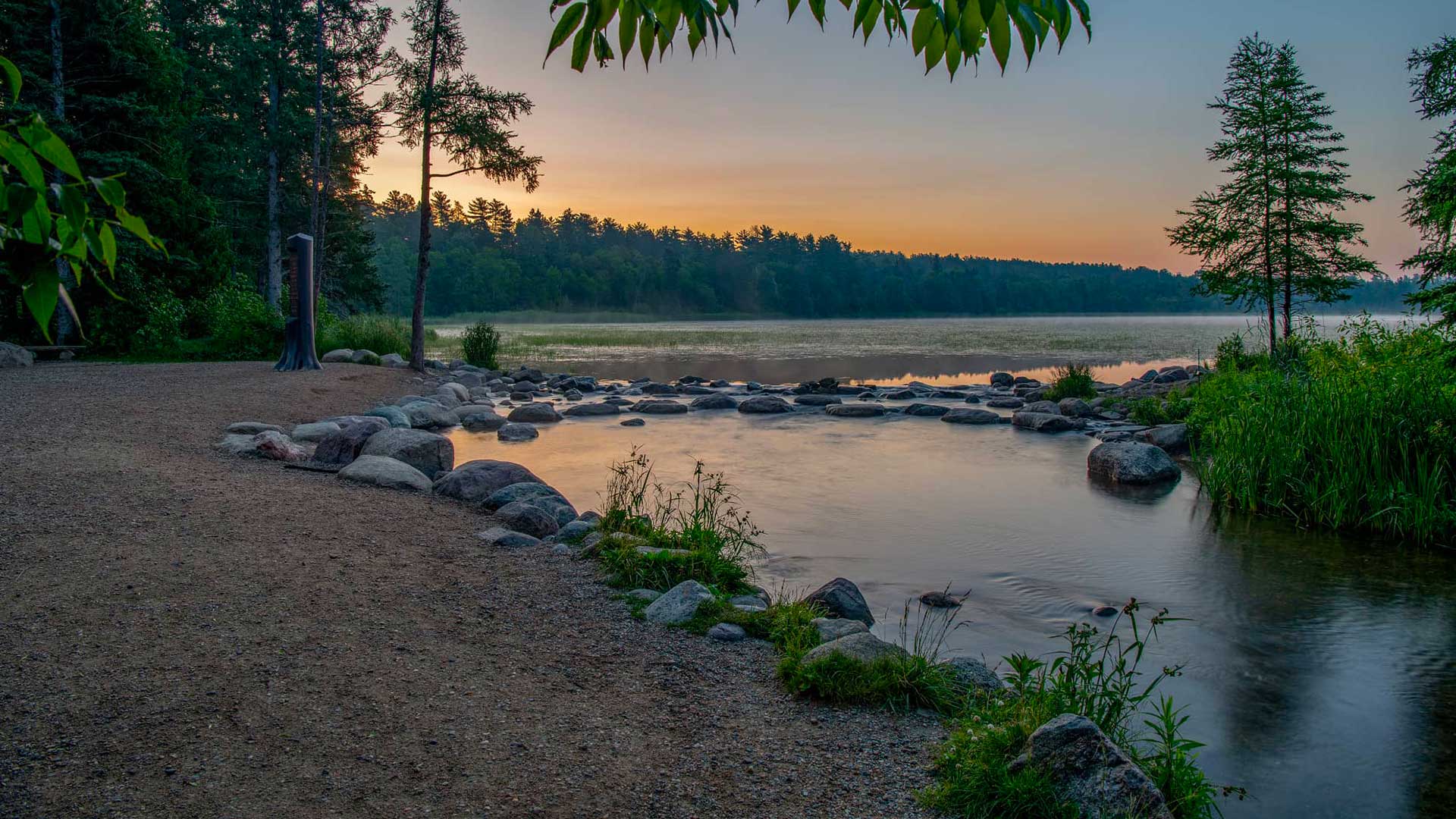The Great River Road’s network of Interpretive Centers tells the story of the Mississippi River, its people, and its history at museums, historical sites, parks, and more. Here are some of the Interpretive Centers you shouldn’t miss in the northern Great River Road states of Minnesota, Wisconsin, Illinois, Iowa, and Missouri.
See more Interpretive Centers along the Great River Road here.
All about the Mississippi River
Looking to learn a little bit about the mighty Mississippi River as you follow it through the Great River Road’s northern states? Start at the Jacob V. Brower Visitor Center at Itasca State Park (where the Mississippi River starts), where you’ll find exhibits about the park’s history, the local environment, and more—plus, the headwaters of the Mississippi are just a short walk from the visitor center. The Mississippi River Visitor Center in Rock Island, Illinois, overlooks Lock & Dam 15, and visitors can learn about the Army Corps of Engineers’ efforts to tame the river and how barges and other boat traffic navigate the waterway.
Discover the fish and other animals that make their home in and around the Mississippi River at the National Mississippi River Museum & Aquarium in Dubuque. This popular attraction in northeastern Iowa is home to 14 acres of river animals, including ducks, turtles, otters, stingrays, fish, and even an alligator.
In Wisconsin, the Genoa National Fish Hatchery and Great River Road Interpretive Center features two aquariums filled with fish native to the Mississippi River and a stream aquarium including fish typically found int the state’s streams. The hatchery grounds are also a good spot for birdwatching.
Parks and natural areas
Explore everything the Mississippi River has to offer at the National Park Service’s Mississippi River Visitor Center in St. Paul, which includes exhibits on the Mississippi National River and Recreation Area and river culture, biology, and history, as well as information on recreational opportunities like hiking, biking, boating, fishing, and more in the recreation area.
The Upper Mississippi River National Wildlife and Refuge—which is celebrating its 100th anniversary in 2024—stretches from Reads Landing, Minnesota, to Princeton, Iowa, and the refuge’s visitor center can be found in Onalaska, Wisconsin. The visitor center has exhibits about the river region and its wildlife, as well as an overlook frequented by bald eagles, swans, and other birds.
Pere Marquette State Park in Grafton is one of Illinois’ most beautiful parks, offering outstanding views of the Illinois River—a tributary of the Mississippi River—and great trails for hiking, scenic campsites, and excellent fishing. Located along the Mississippi River in southeastern Missouri, the Cape Girardeau Conservation Campus Nature Center can be found in the city’s North County Park and is a great place for birdwatching and hiking.
One of several National Park Service sites on the Great River Road, Effigy Mounds National Monument in Harpers Ferry, Iowa, features more than 200 earthen mounds, some of which were constructed 1,400 years ago. The 2,500-acre park also has 14 miles of trails, some of which offer breathtaking views of the Mississippi River and its surroundings.
A trip through history
The confluence of the Mississippi and Minnesota Rivers has long been an important place of gathering, and St. Paul’s Historic Fort Snelling—situated at the meeting of these two waterways—tells a story that stretches back more than 10,000 years and includes Native American cultures like the Dakota, French fur traders, American soldiers, and many more.
Two iconic Interpretive Centers in Missouri take visitors through the history of the Mississippi River and America’s westward expansion: the Mark Twain Boyhood Home and Museum in Hannibal honors one of the country’s most famous authors, and Gateway Arch National Park in St. Louis includes not only the famous 550-foot-tall Arch but also the Museum of Westward Expansion, which includes artifacts from the Lewis and Clark expedition.
Speaking of iconic Americans, William F. Cody (aka “Buffalo Bill”) was born in LeClaire, Iowa, and fans of Western history can learn about his life at the city’s Buffalo Bill Museum and Lone Star Steamer, which is also home to the nation’s sole remaining wood-hulled steamboat.
Learn about Wisconsin’s agricultural history at Stonefield Historic Site in Cassville, which is located on the former estate of the Dairy State’s first governor and boasts more than 30 restored historic businesses and Wisconsin’s largest collection of farm equipment and vintage tractors.
Did you know that Illinois’ section of the Great River Road is home to a UNESCO World Heritage Site? Cahokia Mounds State Historic Site in Collinsville tells the story of the most sophisticated prehistoric native civilization north of Mexico, which once covered more than 4,000 acres and included more than 120 earthen mounds.
Photo: Itasca State Park/Peter Hawkins








